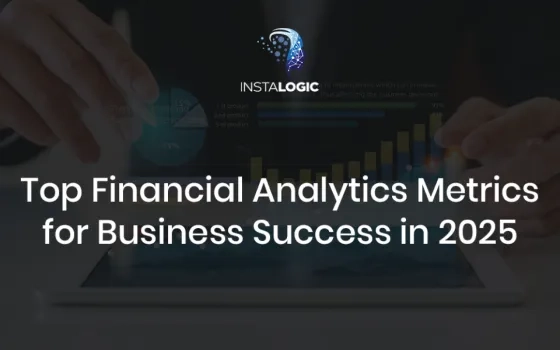Take a moment to think about a business suffering from employee attrition, low productivity, and low job engagement. The HR team is left working in uncertainties, leading to information wastage and interrupted profits. Now, take that same company and consider the tools they have to foresee who is likely to leave, what the top drivers are towards high performance, and how to maintain high engagement levels among employees- all due to people analytics. This game-changing approach transforms raw data into actionable insights, turning HR from reactive to proactive.
Are you also eager to know what people analytics is? What does it involve, and why is it important for your business? You’ve come to the right place!
What is People Analytics?
People analytics, also called HR analytics, workforce analytics or talent analytics, is the combination of management and technology involving data analysis of employees in an organization. Understanding people analytics has changed quite a lot over the years. Previously, HR metrics involved tracking employee headcount and turnover rates. But now, people analytics has progressed into an all-encompassing system that includes predictive capabilities, understanding how employees act, and even analyzing what the organizational strategy should be.
Thanks to the emergence of big data and sophisticated analytical techniques, people analytics has become almost central to HR functions today. Here are some important things to know about people analytics:
- The application of People Analytics has resulted in 80% more efficiency in recruitment, 25% improved business productivity and 50% lower attrition rate.
- 50% of CEOs say their organizations currently use data analytics to find and keep the right people and retain them.
- The percentage of companies looking to expand the size of their People Analytics team has grown from 60% in 2020 to 75% in the present.
What Does People Analytics Involve?
Key components of people analytics include:
Data Collection
The retrieval of pertinent data from appropriate sources such as databases, HR records, surveys or social media sites. This data set, which is composed of qualitative and quantitative data, enables an in-depth analysis of the workforce.
Data Analysis
The application of statistical and quantitative analysis methods to the data collected. This could entail determining the relationships of different variables, how those variables behaved over a certain period and whether they formed any patterns that can explain the activities within the organization.
Data Interpretation
Analysis of the findings and coming up with recommendations. This requires knowing the analysis, its relevance, and its importance so that HR experts can take corrective actions where necessary.
Reporting and Visualization
Making the conclusion in a manner that is simple to understand. Visual analytics tools will have charts and other 3d mappings, enabling the relevant users to understand the analytics better and make actionable insights.
Predictive Modeling
Drawing inferences about the future from what has happened in the past. This may include predicting attrition within the organization, forecasting which workers are high performers, and evaluating various HR strategies and their outcomes.

People Analytics Process
As mentioned earlier, people analytics requires following a specific set of procedures that ensures that the analysis of the data gathered is relevant and useful. Here is how people analytics typically looks:
Identifying Objectives
The first step in the process of people analytics is to identify the specific goals or the questions that need to be answered. This could be anything from reducing employee turnover rates to increasing diversity and inclusivity within an organization. Specific objectives ensure that every analysis covers and is relevant.
Data Collection
This may involve pulling data from HR systems, conducting surveys or even integrating external data sources. Since data is the cornerstone of the research, it’s highly important to bear in mind that it has to be of good quality. If the data collected is not accurate or complete, this can lead to conclusions that are absolutely wrong.
Data Cleaning
Preprocessing includes general data editing or cleaning that is often necessary to eliminate flaws identified in the primary data. Data cleaning is the process of making things right and getting the clean data for analysis.
Data Analysis
Now, with clean data, the researcher is ready to examine the data with various inferential statistical techniques and/or applications of machine learning. This is the other area where people analytics software comes in.
Interpretation
Data is analyzed and presented, but that is only part of it. The findings must be contextualized within the organization. This means figuring out what the findings mean for the organization and how they can be leveraged to meet organizational objectives.
Actionable Insights
Conclusion entails transforming such findings into practical measures. This could involve some actions such as changing certain HR policies, adjustments in manpower management approaches, or other alternatives in order to achieve better outcomes in the organization.
Continuous Improvement
People analytics does not start and end with just the analysis of the people’s data. As more of the data gets gathered and studied, people’s data analytics can bring about improvement in HR practices or the entire organization’s performance.
Why is People Analytics Important?
Analytics has grown in popularity and has quickly become an important resource for organizations. There are many advantages enjoyed by the organization, which make people’s analytics a crucial aspect. Here’s why people analytics is important:
Data-Driven Decision Making
People analytics refers to the application of analytical procedures to the workforce within a company, making it possible to make decisions based on facts rather than thanks to intuition.
Improved Employee Retention
Analysis of data connected to employee turnover, data on engagement and employee satisfaction can provide insight into the reasons why turnover is high, and measures to keep the employees are taken.
Enhanced Talent Management
People analytics tools enable organizations to identify the most gifted employees, their development areas, and the efficient strategy for talent management. As a result, career advancement and succession planning are more effective.
Enhanced productivity
Through the evaluation of factors like employee satisfaction and workload, organizations are able to determine performance factors and, hence, structure efforts towards improving them.
Cost Saving
Through people analytics software, organizations are able to pinpoint places where the HR operational system can be improved, thus leading to a reduction in the costs incurred and the unnecessary consumption of resources.
What is People Analytics Software and its Functions?
People analytics software is a term used for HR data processing and management tools. This promotes the improvement of understanding the vast number of data that organizations face in all kinds of business. There are different categories of people analytics software that differ in functionalities.
HRIS (human resource information systems)
All HR data management rests on these systems that record and monitor employee details, payroll and other HR components. One example is ProHance, where HR can get detailed employee data through Work Time, Work Output, Workflow Management and Advanced Analytics modules.
Workforce Analytics Platforms
These are people analytics solutions that are purpose-built with further features such as predictive modeling, sentiment analysis and data visualization in real time.
Surveys Tools
The most effective way to gather information from employees is by taking their feedback, and some of the more common tools employed for this purpose are Qualtrics and SurveyMonkey. These tools usually have built-in analytics, which helps organizations see all the surveys that have been undertaken and the conclusions attained.
Conclusion
People analytics has changed how organizations engage in HR management since they can now apply a data-oriented approach to HR, achieving better decision-making, employee engagement, and productivity and improving the performance of the business. Organizations can reap the benefits of people analytics by comprehending the elements that people analytics consist of, the people analytics process, and, most vital of all, the tools used for people analytics. Furthermore, as the field advances, such as advancements in technology and competition in the business environment, the future of HR intelligence lies in the hands of those who can efficiently harness the power of people analytics.




























